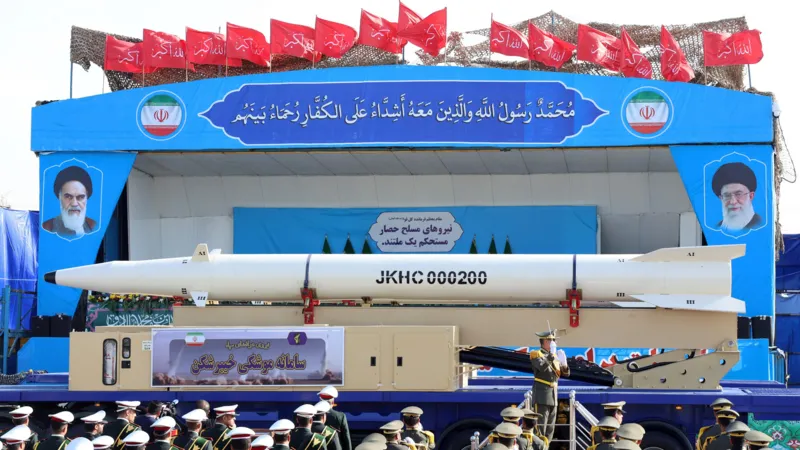
By Our Reporter
In what many are calling a modern military mismatch, the tiny but technologically advanced state of Israel — with a population of just nine million — has taken on Iran, a regional superpower of 88 million people, and is making significant gains.
Despite being outnumbered in nearly every traditional metric of war — population, landmass, and sheer troop numbers — Israel’s superior military sophistication, strategic intelligence, and U.S.-backed arsenal have enabled it to cripple key components of Iran’s defenses, raising serious questions about how far this conflict could go.
The Israeli military, known for its precision and rapid response capabilities, has already claimed air superiority over Tehran. The assault began with stand-off strikes using U.S.-made fighter jets and drones, followed by guided bombs and precision missiles. Iran’s aging fleet of jets, many grounded for years due to sanctions and limited upgrades, never made it off the runway.
Even before the air campaign began in earnest, Israel’s intelligence network — reportedly including Mossad operatives inside Iran — had already compromised radar installations and air defense systems. Smuggled drones were used to disable key command and control centers. Some of Iran’s most advanced missile defense platforms, like the S-300, were among the early casualties.
According to Israeli reports, much of Iran’s top military command has also been wiped out in targeted strikes, severely disrupting the country’s ability to coordinate an effective defense.
Despite the asymmetric advantage Israel currently holds, Iran has not been completely neutralized. Before the assault, the United States warned that Iran possessed the largest ballistic missile arsenal in the Middle East, with estimates ranging from 2,000 to 3,000 missiles.
While many of Iran’s missile factories and launch platforms have been destroyed — including nearly a third of its surface-to-surface launchers — Tehran has still managed to fire retaliatory barrages. Some have breached even Israel’s sophisticated Iron Dome and David’s Sling missile defense systems.
Analysts stress that air superiority is not the same as air dominance. Iran retains thousands of short-range and medium-range ballistic missiles capable of causing damage and panic. Its nuclear program, some of which is housed in deep underground bunkers like Fordow, remains intact — and out of reach for most conventional munitions.
For years, Iran invested heavily in proxy forces: Hamas in Gaza, Hezbollah in Lebanon, and the Houthis in Yemen. But their capacity to challenge Israel has been sharply curtailed.
Hamas is all but dismantled in Gaza following Israel’s sustained campaigns. Hezbollah, wary of heavy losses, has remained uncharacteristically quiet. Even the Houthis, though still capable of firing occasional missiles, have not escalated in any meaningful way — despite surviving U.S. airstrikes earlier this year.
Nonetheless, Iran’s regional influence remains dangerous. Militias in Iraq and Syria continue to pose threats to U.S. and allied forces. The Strait of Hormuz, through which a fifth of the world’s oil flows, remains a potential pressure point — one Tehran could use to escalate the crisis globally.
As the war intensifies, Western powers are bracing for fallout. The UK has deployed additional RAF Typhoons to Cyprus, and U.S. naval assets remain on high alert in Bahrain. There are real concerns that prolonged hostilities could pull NATO allies into the conflict — or provoke wider regional instability.
So far, U.S. President Donald Trump has maintained strong support for Israel, supplying advanced munitions, intelligence, and political backing. However, reports indicate he vetoed Israeli plans to assassinate Iran’s Supreme Leader, Ayatollah Ali Khamenei, underscoring the thin line between military dominance and strategic restraint.
Washington has also withheld its most devastating weapon — the Massive Ordnance Penetrator, a 30,000-pound bunker-busting bomb — which would be necessary to destroy deeply fortified Iranian nuclear facilities.
The Israeli military may continue degrading Iran’s capabilities, but a complete victory remains uncertain. Analysts say the campaign may delay, but not dismantle, Iran’s nuclear ambitions. Meanwhile, regime change in Tehran — which some hardliners in Tel Aviv may desire — remains unlikely through air power alone.
History offers cautionary tales: Libya in 2011, Gaza under siege, and Afghanistan post-occupation. Military might may conquer airspace, but it rarely secures peace on the ground.
As the skies over Tehran remain under Israeli control, and missiles continue to light up the night, one thing is certain: this is no longer just a regional skirmish. It’s a modern, high-tech war — with global consequences waiting in the wings.
